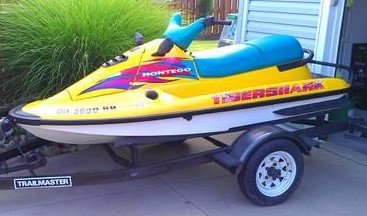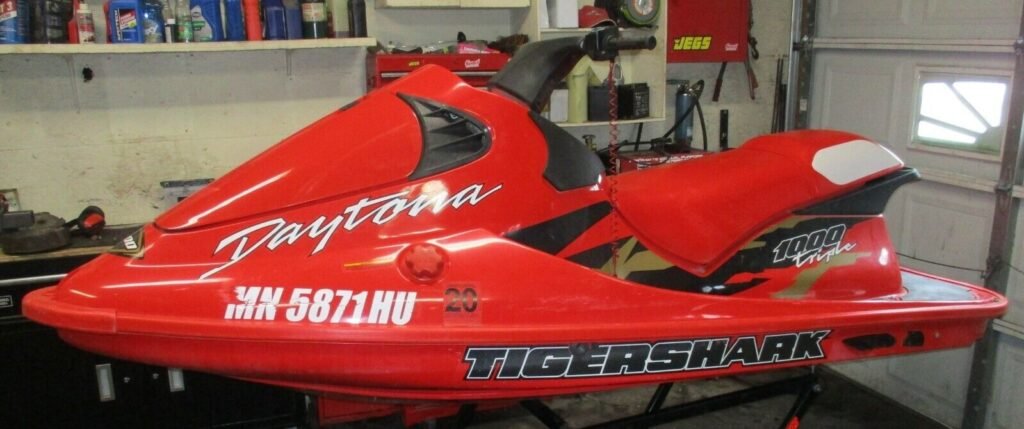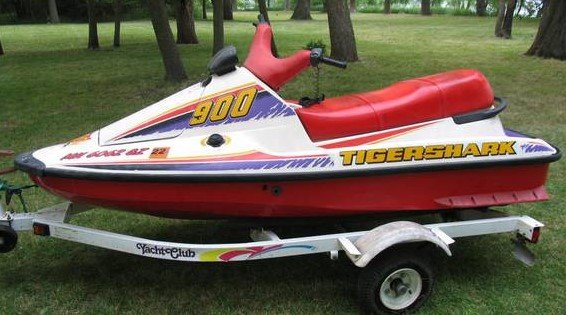This post may contain affiliate links, which means that I may make a small commission off items you purchase at no additional cost to you. Please see my terms of use page for details.
Did market-related factors contribute to the discontinuation of Tigershark’s jet ski production? In this article, we will explore the possible reasons behind Tigershark’s decision and delve into the broader landscape of jet ski manufacturing. Alongside examining popular questions about jet skis, personal watercraft, and the prominent manufacturers such as Yamaha, Seadoo, Kawasaki, Honda, and Polaris, we will also uncover why Honda, Polaris, and Tigershark jet ski halted their production, providing a comprehensive overview of the industry’s dynamics. Join us as we uncover the fascinating world of jet skis and unravel the mysteries surrounding Tigershark’s exit from the market.
Market-related Reasons for Tigershark Jet Ski Discontinuing Production

Introduction to Tigershark Jet Skis
Tigershark was a well-known brand in the world of jet skis, manufacturing high-quality personal watercraft for recreational use. The company had a rich history and background in the industry, with a reputation for introducing innovative features to their products. Tigershark jet skis had gained popularity among water sports enthusiasts due to their performance, durability, and unique design features.
Overview of Tigershark’s Market Performance
Tigershark held a significant position in the jet ski market, although it faced fierce competition from other leading manufacturers such as Yamaha, Sea-Doo, Kawasaki, Honda, and Polaris. The company had a dedicated customer base, but its market share had been declining over the years. It experienced challenges in maintaining its competitiveness and struggled to keep up with the evolving market dynamics and consumer preferences.

Competitive Landscape of Jet Ski Manufacturers
In the jet ski industry, there was intense competition among the top manufacturers, each vying for market dominance. Yamaha, Sea-Doo, Kawasaki, Honda, and Polaris were key players that consistently introduced new models and innovative features to attract customers. Each manufacturer had its strengths and weaknesses, and consumers often exhibited brand loyalty based on their perceptions and preferences regarding reliability, performance, and quality.
Impact of Tigershark’s Discontinuation on the Market
Tigershark’s decision to discontinue jet ski production had a notable impact on the market. Industry reactions varied, with some expressing disappointment at the loss of a respected brand. The discontinuation led to a shift in market dynamics and the competitive landscape, opening up opportunities for other manufacturers to acquire more market share. Changes in sales volumes and market share were observed, with Tigershark’s absence leaving an imprint on consumers and jet ski enthusiasts.
Economic Factors Influencing Tigershark’s Decision
Several economic factors influenced the decision to discontinue Tigershark jet ski production. Market trends and forecasts indicated a decline in demand for personal watercraft, making it difficult for Tigershark to achieve profitability. The cost-benefit analysis of jet ski production did not favor the company, considering production costs, operational expenses, and potential returns. Additionally, factors such as the global recession, financial instability, and fluctuating exchange rates further exacerbated the challenges faced by Tigershark.

Sales and Profitability of Tigershark Jet Ski Production
Tigershark experienced fluctuations in sales revenue and profitability throughout its existence as a jet ski manufacturer. Despite initial success and a loyal customer base, the company struggled to consistently generate significant revenue and maintain healthy profit margins. Factors such as market competition, consumer preferences, and production costs impacted Tigershark’s sales and profitability. In comparison to its competitors, Tigershark faced greater challenges in achieving financial success in the jet ski market.
Consumer Demand and Preferences
Consumer demand for jet skis underwent shifts over time, influencing the market and manufacturers’ strategies. Various factors, such as price, performance, features, and technological advancements, played a crucial role in shaping consumer preferences. Tigershark faced challenges in meeting evolving consumer demands and failed to align its product offerings with the changing market trends effectively. Consequently, consumer feedback on Tigershark jet skis often highlighted the brand’s shortcomings compared to its competitors.
Quality and Reliability Issues of A Tigershark Jet Ski
Tigershark jet skis faced quality and reliability issues that affected their reputation and customer satisfaction. Reports of product defects, failures, and warranty claims were not uncommon, leading to customer complaints and safety concerns. These quality and reliability issues tarnished the brand’s image and made consumers wary of purchasing a Tigershark jet ski. In comparison to its competitors, Tigershark struggled to maintain consistently high-quality standards.

Marketing and Branding Strategies
Tigershark’s marketing and branding strategies played a crucial role in its market performance. However, the company faced challenges in effectively promoting its products and differentiating itself from competitors. The brand lacked the widespread recognition and strong consumer perception enjoyed by its competitors. Insufficient investment in marketing activities, coupled with an inability to establish a distinct brand identity, affected Tigershark’s ability to attract and retain customers.
Production Costs and Manufacturing Challenges
Tigershark encountered various production costs and manufacturing challenges that impacted its operations and profitability. Factors such as raw material costs, manufacturing processes, and operational efficiency influenced the overall cost of producing jet skis. Tigershark struggled to optimize its production processes, leading to higher costs and lower profitability. These challenges further compounded the difficulties faced by the company in maintaining its competitiveness in the market.
In conclusion, Tigershark’s decision to terminate jet ski production was influenced by a combination of market-related factors. The company faced intense competition from leading manufacturers, struggled to meet changing consumer demands, encountered quality and reliability issues, and grappled with the economic challenges of the industry. These factors, along with production costs and manufacturing challenges, ultimately led to Tigershark’s exit from the jet ski market. Despite its history and reputation, Tigershark’s inability to address these market-related reasons contributed to its discontinuation of jet ski production.
Related Articles:
What Led To The End Of Honda Jet Ski Manufacturing? Why Did Honda Stop Making Jet Skis?
What Led To The Termination Of Polaris Jet Ski Production?
